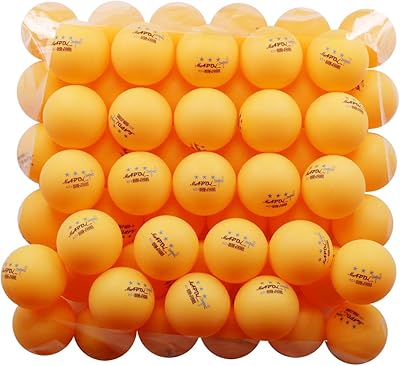
How to Choose and Buy Best Ping Pong Balls
How to Choose and Buy Best Ping Pong Balls
It is essential to choose the best ping pong balls if you are seriously interested in playing this sport. You can’t play the game properly with no quality ping pong balls. And there are a tonne out there, so it can be very hard to really know what you should buy. But fear not, we have done all the work for you. All of the ping pong ball info you need is carefully outlined in this article so you don’t want to do any painstaking research. Enjoy!
What Are Ping Pong Balls Manufactured From?
Previously, ping pong balls were manufactured from rubber covered with cloth, but it was in the past. Celluloid then became the material of choice for many years before it was replaced by poly-plastic material.

What is the Diameter of a best ping pong balls?
The standard dimensions of a ping pong ball are 40-mm in diameter.
Ping pong ball size - diameter:
mm: 40
cm: 4.0
inches: 1.57
Do ping pong balls come in various sizes?
In a professional tournament, balls will need to have specific dimensions. The latest rules state that they must be 40mm in diameter. Previously balls were 38mm.
This ball change slowed down the game and made rallies more exciting.
What is a 40+ table tennis ball?
Between 2014-2015, a new type of ball made with non-flammable plastic material was introduced to the table tennis world. More common name for this is the plastic ball, however, it is usually termed as the 40+ ball or poly ball.
These balls are marginally larger than the 40mm celluloid balls, that’s why manufacturers imprint 40+ on the front. It can help you distinguish one from the other.
What Do Stars on Ping Pong Balls Mean?
As a buyer, you should look out for star ratings written on your golf ball. A rating of three stars represents tournament-grade quality and it is the highest quality on the market.
Fewer star ratings indicate less quality than what is allowed in professional tournaments. These balls are cheaper than 3-star balls and aren't as durable.
Star Rating of the Balls
1-star for practice balls.
2-star for training balls.
3-star for professional tournament balls.
Some manufacturers sell 4-star and 5-star balls, however they are not the simple truth is rated above 3-star. According to ITTF, 3-star is the highest that you can purchase.
Each ball receives its rating as part of the quality control process. Only the balls that meet all the strict tests receive the 3-star classification. Those that fall just short are 2-star, and the ones with the lowest quality receive a 1-star rating. So what are the best type of ping pong balls? 3-star balls each and every time.
The difference between 2-star and 3-star might not exactly immediately be apparent when you play with them, however the same cannot be said for 1-star vs 3-star. Such a notable difference is obvious. 1-star balls are much harder to continue the table.
Common qualities manufacturers test for are:
Quality of surface
Veer
Hardness
Weight
Roundness
How to Choose the Best Ping Pong Balls?
It can be quite tricky if you are not sure what you are interested in.
Firstly, ensure the ball does not have any visible seam at the center. If you can see the stitching, ignore the ball straight away. This will likely indicate a flat spot around the seam area.
best ping pong ball no seam
The second thing you can look for is the ball’s firmness. Try pressing the ball to feel to see how hard it is. In case the ball caves in, it is likely not good quality.
The third aspect you can attempt is the roundness of the ball. Now by just holding it in your hand, it is quite challenging to see if it is completely round. The best way to test it is to spin the ball on a set surface.
By looking at it from the top, you can see if it has any wobbles. Consider spinning an egg and you could see the egg wobbles quite a bit. A correctly round ball won't sway.
Difference Between Plastic Ball With Seam, Seamless, and Celluloid Ball
Standard ping pong balls are created now crafted from plastic since the ball change, but older balls made of celluloid are still commonly sold. It’s helpful to learn the dissimilarities between all available balls as you will probably find yourself using older balls at some point.
With new plastic balls, both with and with out a seam, you will probably not notice much difference between your two, at least, not that you can directly attribute to the presence of a seam. Instead, celluloid balls will show a more clear change. Plastic balls normally, are slower and less spinny, they also bounce a touch higher. This can make swapping between the two rather difficult. As plastic balls are actually standard, we strongly suggest just sticking with plastic balls.
In conditions of the physical testing between the balls, you can view a comparison below provided by the ITTF. The dissimilarities here are minimal. There is absolutely no substitute to using each type of ball yourself to observe how they perform.

